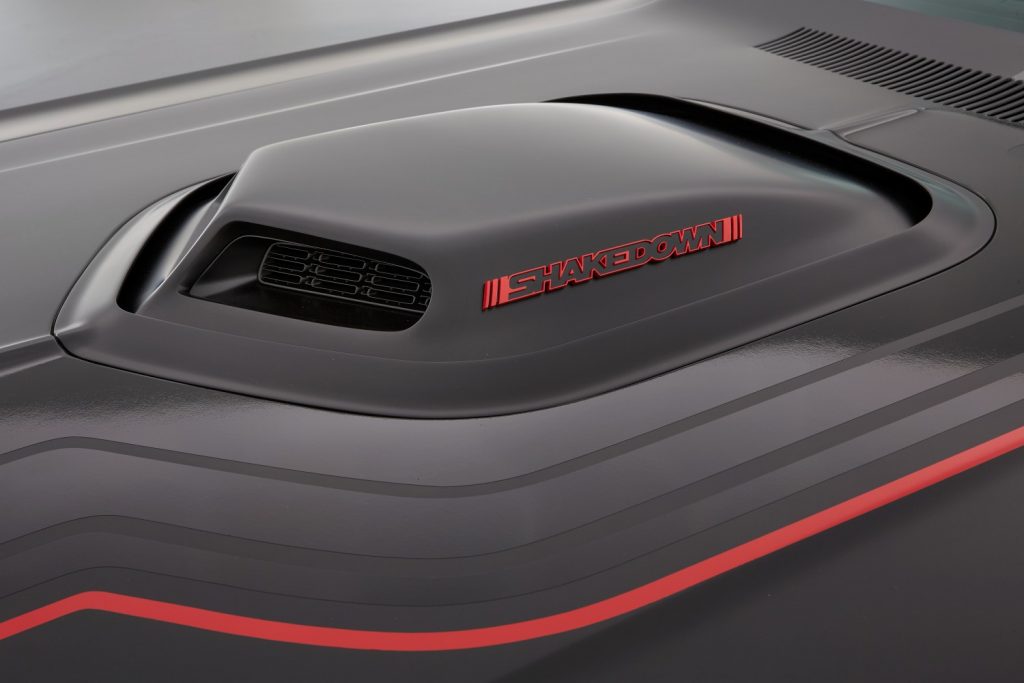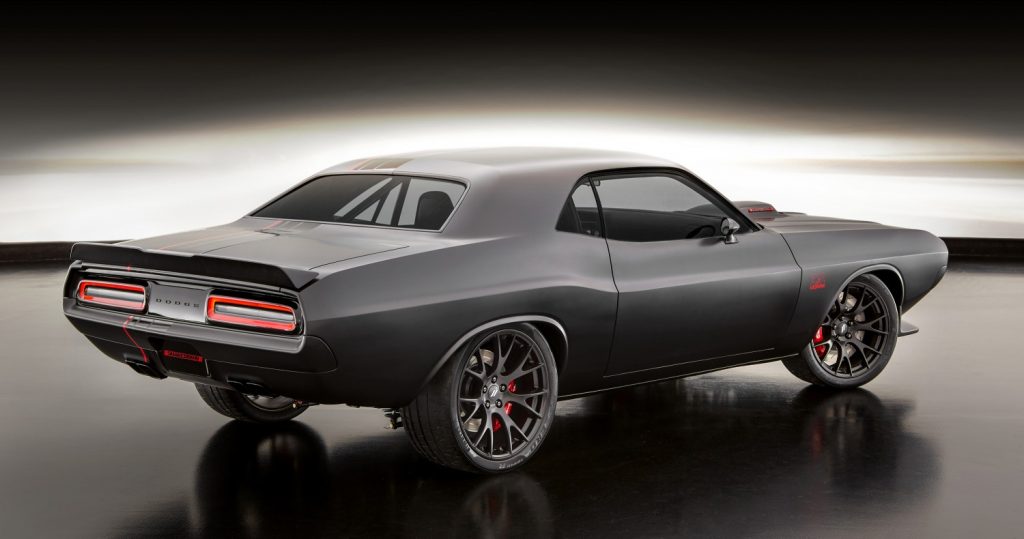Having just purchased a new Dodge Challenger, this caught my eye. A stunning looking old-new Challenger, especially if you like that Old School look.
Mopar, the legendary parts and accessory division of Fiat Chrysler Automobiles, has built a remarkable reputation for tuning and accessorising but at this year’s SEMA, the world’s largest aftermarket show that’s just opened its doors in Las Vegas, Mopar have taken accessorisation to a whole new level with the Dodge Shakedown Challenger.
For a start is this the Dodge Challenger that was one of the great muscle cars of the early 1970s and which starred in road movie classics like ‘Vanishing Point’ or is the modern reinterpretation of the classic car that was launched in 2008 with a design that, even in production, still looks like a concept car?
Well, yes, it is.
The Dodge Shakedown Challenger weaves together design cues from the past and present to create a uniquely original Mopar creation. The blend of yesterday and today is distinctly visible through exterior and interior styling, but comes to throaty fruition under the hood, where new Mopar-powered products administer a jolt to the heart of the classic 1971 Challenger.
The Shakedown Challenger drives 485 horsepower to the pavement via a Viper Tremec T6060 six-speed transmission and is further augmented by a Mopar concept cold-air intake and Mopar custom dual exhaust with black powder-coated Mopar exhaust tips. The custom front and rear suspension is lowered, dropping the Shakedown Challenger closer to the road — or to the track — creating a capable performer versatile enough to tackle the street or Pro Touring/Drift-type motorsports competition. Braking power is supplied by Brembo-red SRT® Hellcat six-piston front brakes and four-piston rear brakes.
The merging of old-school muscle with the 21st century is quickly evident on the “Bitchin’ Black” exterior, hung on a unique hand-built, one-off frame with a removable body. The Dodge Shakedown Challenger rolls on concept SRT Hellcat Slingshot-designed 19-inch by 9 1/2-inch front and 20-inch by 9 1/2-inch rear wheels, providing a “coiled” stance. A heritage-inspired 1971 Shaker hood scoop is added with help from select parts from the Mopar brand’s modern-day Shaker hood kit, feeding fresh air to the HEMI® powerplant.
The Shaker hood scoop is accented on top with a black “Shakedown” badge outlined in red, tying in neatly with custom gloss-black and gloss-red stripes that hug the scoop and flow down to the fascia and also up and over the roof to the tail, extending around and underneath the valance.
The 1971 Dodge Challenger body is shaved, deleting the door handles, drip rails and fuel door, which is relocated to the trunk. The Dodge Shakedown Challenger incorporates concept front headlamps and taillamps from the 2017 Dodge Challenger “massaged” to mesh seamlessly with ’71 Challenger proportions. The headlamp bezels are Satin Black, as are the housing and surround of the tail lamps, which feature lenses trimmed in red. The modern Challenger grille and surround also get the Satin Black treatment, set off by gloss-black grille bezels. Satin Black also colors the concept rear spoiler and chin spoiler, fog lamp bezels and mirror caps. Matching red Mopar 392 logo decals on the front fenders complete the exterior.
Heading inside, the iconic Dodge is further transformed with modern mods. Dodge Viper front seats are re-trimmed in black Katzkin leather bolstered by black Alcantara inserts and red stitching matching the embroidery on the Dodge Viper steering wheel, which features a custom satin black airbag cover and shroud. The black leather shift boot adds additional modern Challenger DNA, capped by an SRT Hellcat gearshift knob. Mopar instrument panel gauges are black, contrasted with the gloss carbon fiber instrument panel cluster trim. The center console, steering wheel trim and door panels are also gloss carbon fiber. A black “Shakedown” badge outlined in red is stamped on the dash.
The Shakedown’s potential as a track performer is catered to with a custom roll bar and rear seat delete, replaced with netting and a console shelf for storing racing essentials. The fuel cell and lines are stored in the black-carpet lined trunk.
Clearly, this is the car that Kowalski needed back in 1971 to avoid his ‘Vanishing Point’ in the California desert. (OK, yes, for purists, the legendary ending was actually shot in Cisco, Utah, but you know what we are getting at….)
*Press Releases are direct from the Manufacturer, and not edited in any way.


















































